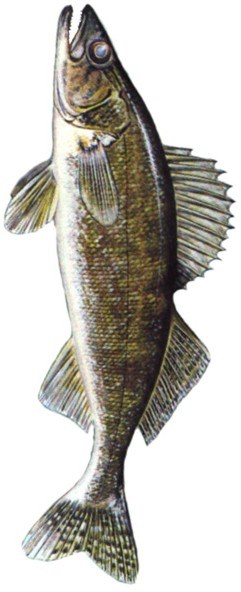NEWS RELEASE
ANISHINABEK / ONTARIO FISHERIES RESOURCE CENTRE
********************* Echo River walleye spawning assessment
The Anishinabek/Ontario Fisheries Resource Centre (A/OFRC) in collaboration with Garden River First Nation (GRFN), will begin collecting important walleye stock information in mid-April on the Echo River.
They will be evaluating the spawning walleye population utilizing this river both above and below a lamprey barrier established on this river in 1986.
The First Nation will use this data to prepare a management strategy that will incorporate protocol agreements and conflict resolution mechanisms, for use in dealing with other territorial First Nations or neighboring communities.
The main objective of this project will be to begin the development of an accurate database, tracking existing stock conditions on the spawning walleye population utilizing the Echo River drainage, as well as review the impact of a lamprey barrier on walleye spawning that currently exists.
Since the construction of a sea lamprey barrier, walleye have not been able to access their traditional spawning grounds up-river.
GRFN is seeking information on the status of this spawning population, as no assessment has ever been completed.
Blaine Belleau – natural resources technician (economic development unit) for GRFN says: "Assessment of the Echo River walleye population is a high priority for our community."
"GRFN has one main focus on providing user groups with the best possible management strategy for the walleye occupying Echo River and surrounding water bodies," he goes on to say.
All captured walleye will be marked with a numerical A/OFRC floy tag for the purposes of tracking migration.
In addition, a presence/absence study will be conducted above the lamprey barrier with a combination of short set gillnets and identification of spawning individuals with the use of spot lights.
Time schedule will depend upon spring weather, temperatures and the beginning of the spawning season, and will run 3 to 4 weeks starting in mid-April.
There is overwhelming support for this project from the Upper Great Lakes Management Unit, Sault St. Marie District Ontario Ministry of Natural Resources office and the Department of Fisheries & Oceans Sea lamprey control program.
*********************
